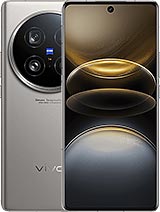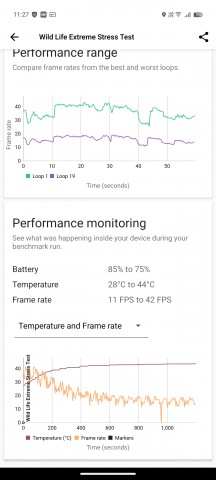vivo X200 Pro (Global) review

Update, 08 Jan 2025: We received a global version of the phone (as opposed to the China-specific one we had previously) and we re-ran the full set of tests. This page has been updated to show the global software, and we've also added the benchmark results for the global version, alongside the ones for the Chinese variant.
Android 15 with Funtouch OS for the world
The X200 Pro was among the Android 15 pioneers, though by now that version of Google's OS is more or less the norm. We initially had the Chinese version with Origin OS 5 on top, but now we get a global build of Funtouch OS 15 on our second, international unit. The X200 Pro should get 4 major OS release updates and 5 years of security patches, which makes for a solid software future.

The latest Funtouch isn't much different from previous iterations in look and feel, and almost gives off a bit of a dated vibe with its visuals.



Funtouch OS 15 on the vivo X200 Pro
You won't be missing out on functionality, though. Funtouch does have niceties now taken for granted like large folders, plus vivo has come up with one of the more intuitive split-screen/pop-up window implementations on the market. The app drawer is worth mentioning too, because that's where Funtouch keeps its widget selection for some reason.



More Funtouch OS 15 on the vivo X200 Pro
As is seemingly the norm this year, the global X200 Pro gets Google's Circle to search feature. Also included, naturally, is the Gemini AI assistant. A Google Lens-powered screen translation feature is also on board. Possibly best of all, the global variant doesn't have limitations like the lack of Google Location history that is one of the key drawbacks of using a Chinese Origin OS X200 Pro.
You also get live translation of phone calls, an AI helper in the Notes app, and an AI Transcript Assist utility for making summaries out of spoken conversations. All of these may be region-dependent though.
Also, unsurprisingly, there's some AI-powered functionality in the gallery editor. You get to delete objects, remove people, and fight reflections - all of those with varying success, of course.
Performance and benchmarks
The vivo X200 Pro continues in the footsteps of previous Pros in the vivo lineup and comes equipped with a high-end Mediatek chip instead of the Snapdragons that most Android flagships use. The one in particular here is the latest Dimensity 9400, a brand-new 3nm chip.
It's another of Mediatek's all-big-core CPU designs - the processor uses one 'prime' Cortex-X925 core (up to 3.63GHz), three Cortex-X4 units (2.3GHz), and four Cortex-A720 cores (2.4GHz). They promise up to 35% higher single-core performance and up to 28% higher multi-core performance compared to the previous model (D9300), while also improving power efficiency by up to 40%.
The Immortalis-G925 GPU, meanwhile, should offer improvements of around 40% in peak performance, ray-tracing performance and efficiency. Also new is the LPDDR5X RAM support.
Memory configurations start at 256GB/12GB and reach up to 1TB/16GB. Our Chinese review unit was the top-spec version, while our global sample has only half a terabyte of storage (still 16GB or RAM). Storage speeds for both units were consistent with the numbers you'd expect from UFS 4.0.
 Different software, same hardware
Different software, same hardware
The X200 Pro comfortably outperforms previous-gen top-tier chipsets in all benchmarks. We got 24% higher single-core results compared to the X100 Pro's D9300, and 18% higher multi-core figures - not quite the promised improvements, but a noticeable step up still. In 3DMark, the X200 Pro recorded a 49% improvement in the Solar Bay benchmark that tests ray-tracing performance and a 39% increase in the Wild Life Extreme result - quite the feat.
That said, the global version was consistently behind the Chinese one - not by a wide margin, but always trailing. The X200 Pro was also not quite as quick as Snapdragon 8 Elite rivals - again, not a huge difference, but some difference.
Sustained performance under maximum load isn't particularly impressive - though, realistically, that's typically the case with all high-end chipsets.
In the CPU Throttling test, the X200 Pro's performance dropped to 58% of the initial result, but at least it was relatively stable and not too erratic in its behavior.
The 3DMark Wild Life Extreme stress returned a 44% stability rating with a relatively quick decline in the results after the first couple of runs.
Reader comments
- techyrock
- 17 Apr 2025
- 6PX
iQOO phones are gaming with a gaming Q series chip, whereas Vivo's X series are Camera oriented phones with V series chips for photography, its like asking Ford to have both raptor and mustang in one car instead of two




















